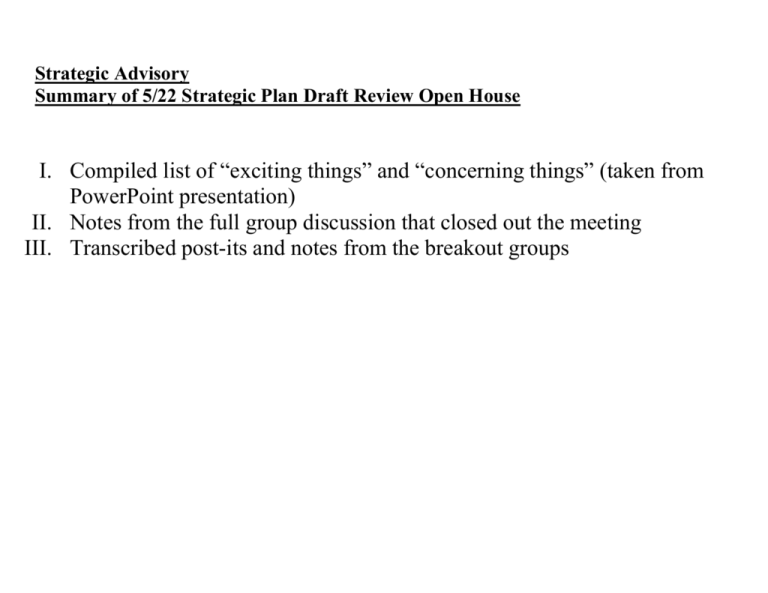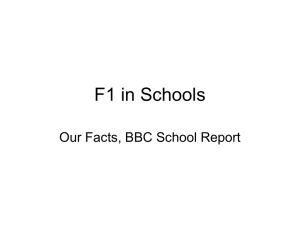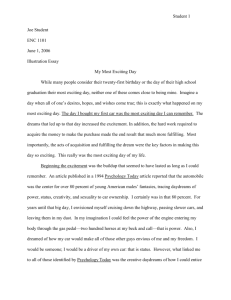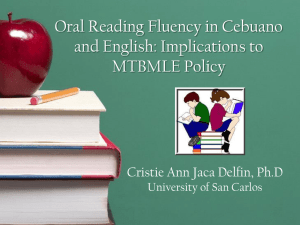here
advertisement

Strategic Advisory Summary of 5/22 Strategic Plan Draft Review Open House I. Compiled list of “exciting things” and “concerning things” (taken from PowerPoint presentation) II. Notes from the full group discussion that closed out the meeting III. Transcribed post-its and notes from the breakout groups I. Compiled list of “concerning things” and “exciting things” (taken from PowerPoint presentation) II. Notes from the full group discussion that closed out the meeting Concerns: Question raised regarding emphasis on collaborative classrooms. Turning the library more and more into collaborative space may devalue what we already do. In learning and teaching section, concern about space. - Like to see library make stronger statement about library space. Proactive rather than reactive. Math/Physics - Dean clearly didn't talk to those who use library. In parallel, when we do have choices, how are we going to make decision? On the continuum between unilateral/participatory. Not as positive (Math/Physics closing) as framed. Are we losing site of unique characteristics of library? Maybe Collaborative Class space is future of pedagogy. How can we dovetail with that...brand…differentiate? What is our role? How do we support that use of space? Decisions made outside (regarding departmental) . The plan says we are going to move more print. But where print goes, so goes the library? Can library exist without print? Can we exist with print off site? Need to make sure that the user understands that if print moves away, that doesn't mean library is not needed. Connection between how research is done and space. Important to remember that the library is uniquely positioned to understand the student study experience. Where are students going to study? The schools are not paying attention to this. So we need to be careful about this collaborative classroom support. There is still a need for independent quiet study. Lauren did survey of grad students. Way they do research/study is very different then other disciplines. Different pedagogy at work here. Library should step up and field that role. Whether info is online or off,.... impact of closing Math/Physics will not be felt until the fall. Excite: It's impossible to overstate how important discovery is. Information fluency and discovery should be in same section. Connection between the two. Knowledge Creation - that's what the library is about. Fundamental mission. Hasn't changed in years. It’s the mission of the library. Everything we do should revolve around knowledge creation. What happens next? Joe - will take feedback and try to work into the draft. Question about how much detail do you put in plan. You have to stay well above ground level. Haven't quite hit the sweet spot. Plan has to reassure that there will be a continuity of services, and also has to address the changing environment Some of what we talked about focuses on how we implement (operational). We need to parse out planning vs implementation. What we talked about was mostly implementation. There will be a public facing edition of the plan & an internal edition. Drafting team had daylong retreat with consultant to discuss what are the next steps. How are we going to define the service portfolios mentioned in the plan? What are we actually going to do. Create structure for implementation. Room for many voices. Another layer of influence that will involve everyone. Unfolding early in summer...but see implementation closer to the beginning of fall Get together with the Strategic Advisory group to review the process. Reflection. Strategic Advisory group might be part of benchmarking process. III. Transcribed post-its and notes from the breakout groups Table 1 <-Excitement Focus on Researchers Staff Development Concern-> Become partners in knowledge creation “Library as new space and digital & information fluency – how they see us/how we help them Collaboration – exciting, but can really shift library’s focus away from what we do Kuali OLE Digital pedagogy (v. exciting) Liaison Program as key structure p. 15 - reference to “outsourcing” – what does that mean? Use of terms that may not be understood: MARC PennCIL OA Reaching all groups on campus – undergrads unfamiliar with resources Work with publishers and partner orgs. to shape standards (concern) “Majority of collections housed off-campus” Typos: P.3, 4th para. – “ebyond” P.16, 2nd para. – “withour” Operational-> P. 15 – Staff: Investing in training and creating opportunities for staff development – how? Not being explicit about the impact the libraries desire beyond our campus Digital and information fluency LACKS data fluency plan [extension to] <-Strategic “Think” Library – how we’re viewed Maintain Balance Looking both outward and inward Maintaining Libraries’ essential purposes while collaborating and pursuing new initiatives Diversity – Is there a place in the plan to express support for serving a diverse clientele? The professional staff should reflect in the same way the diverse communities the Libraries serve. Table 2 (More excitement=higher positive numbers More concern=lower negative numbers) Libraries being collaborators in research in new ways Increased need to develop “information fluency” highlighting benefits/drawbacks of types of sources Emphasis given to researcher -> focus on STEM +2/3 Increased discoverability (i.e., enhanced cataloging; New Franklin) partner catalogs +1 Print off-campus by 2020? Is this a good goal? Losing sight of core library functions to focus on non-traditional initiatives Glaring downplay of library as place -1 No discussion of the influence of staff/staff culture on strategic priorities/values Professional development for existing staff and trying to attract great new staff -2 Operational: how will we address staffing levels? Operational: what are we going to give up? Operational: how will staff development actually be implemented? Operational: how will we move print materials/people around the system effectively? -3 Outsourcing technology - -> not enough custom features Outsourcing technology rather than building systems -4 Table 3 Exciting: Gives flexibility (ex. Keeping up with changes) Adaptability Building blocks section – forward thinking Abundance of current resources available for researchers interacting with other libraries Research support (data management) starting to focus and be more structured Concerning: Not addressing maintaining existing infrastructure, what we have is valuable Strengthen current services before changing Marketing current resources better How are we going to do this? Transition between strategy and tactics Metrics – how will we know it’s successful? Some parts are written vaguely. If we are doing a scorecard, what’s the score? Doesn’t mention Compact 2020 Plan is short timeframe – only 3 years. Should have tentative completion dates. Table 4 Exciting: Hathi trust and borrow direct in Franklin Truly great discovery Genuine participatory planning before decision making Virtual shelf browsing o Will ease concerns about moving materials to LIBRA Happy that collections are centralized Top 3 Concerning: Making library space decisions match what the library fundamentally is o People still want books, alone space, quiet space, carrels Truly great and comprehensive metadata for great discovery Fully using what we know and can learn to feed decision making Unprocessed materials in LIBRA Other thoughts: What are the main services we provide? Teaching – how do we make library unique – especially teaching space? Ongoing assessment of faculty needs for planning for the Libraries If staff expertise is valued, then we need to use that to make priorities Increase discoverability as a strategic goal How are priorities determined? o Clarity, transparency o Ongoing engagement – internally and externally Top 3 Table 5 Excitement: Staff development (S) Digital fluency - training and teaching users (S) Top 3 Library as collaborator and partner (S) Inclusion of professional practice – communities we serve (S) Emphasis on marketing – bringing people here (to the library) o Centralized production of marketing literature We’re looking at end users’ workflow and how we can help with services Inclusion of space Concern: Staff development – is it all inclusive? (i.e., all staff). Is it real? (T) Language and phrasing – need better definitions of terms like “fluencies” and “matrices” (T) o There’s a general vagueness of language o If using jargon, define the jargon o Incorporate vignettes or examples to explain concepts Mentions physical materials but not a strategy for how that part of the collection will be developed (T) o Generally – where does everybody fit in? Table 6 Excitement: Emphasis on collaboration with users Emphasis on staff development Concern: Emphasis on STEM – does this crowd out humanities/social sciences? “collections” What are the criteria for moving print material offsite? o “Lion’s share” More detail on assessment No mention of support staff








